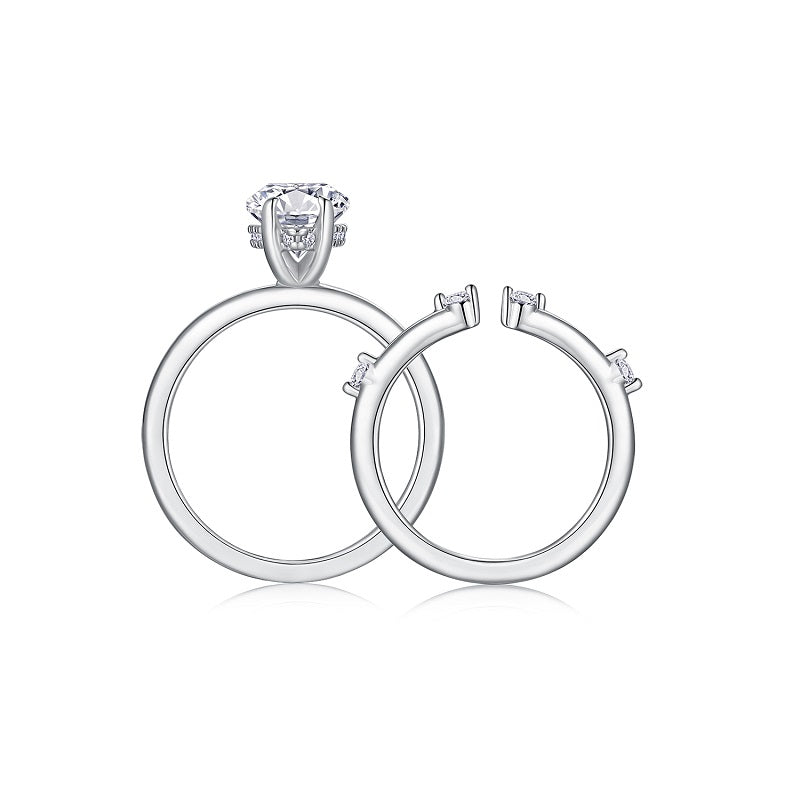Understanding Timelines for Custom Moissanite Ring Services: A Detailed Guide
Customizing a moissanite ring involves a collaborative process between the buyer and the jeweler, with timelines influenced by design complexity, material availability, and production workflows. Unlike ready-made options, bespoke projects require careful planning to ensure the final piece meets expectations. Below is an exploration of the key factors shaping the duration of custom moissanite ring services.
Design Approval and Communication Phases
The initial stage of customization centers on finalizing the design concept. This involves exchanging sketches, 3D renderings, or digital models between the client and the jeweler to align on aesthetics, proportions, and structural details. Revisions during this phase are common, especially for intricate patterns or unconventional settings, and each adjustment adds time to the timeline.
Effective communication is critical to avoiding delays. Clients must provide clear feedback on design elements, such as band width, stone shape, or engrving styles, while jewelers should clarify technical constraints or material limitations. Some workshops use collaborative software to streamline approvals, allowing real-time edits and reducing back-and-forth exchanges. However, even with efficient tools, this phase typically spans several days to weeks, depending on the number of iterations required.
Sourcing Materials and Preparing Components
Once the design is locked in, the jeweler sources materials like moissanite stones, metal alloys, and accent gems. While moissanite is widely available, rare cuts or custom sizes may require special orders from suppliers, extending lead times. Similarly, metals such as platinum or recycled gold might face shortages or need ethical sourcing certifications, adding bureaucratic steps to the process.
Preparing components involves casting, shaping, or engrving metal bases and cutting stones to fit the design. Advanced techniques like CAD/CAM milling or laser engrving can expedite this stage, but manual craftsmanship—often preferred for artisanal details—takes longer. If the design incorporates multiple materials or textures, each element may need separate preparation before assembly, further lengthening the timeline.
Production and Quality Assurance Processes
The production phase transforms raw materials into a finished ring through soldering, stone setting, polishing, and finishing. Skilled artisans handle each step with precision, but labor-intensive processes like pave settings or filigree work demand meticulous attention, slowing down output. Rings with complex mechanisms, such as hinged bands or hidden compartments, require additional testing to ensure functionality.
Quality checks are integral to the timeline, as every detail—from prong alignment to surface smoothness—must meet standards before delivery. Some jewelers conduct multiple inspections at different stages, while others perform a single comprehensive review. If flaws are detected, rework is necessary, which can delay completion by days or weeks. Clients may also request certification for the moissanite stone or metal purity, adding verification steps that impact overall duration.
External Factors Affecting Custom Timelines
Beyond the jeweler’s control, external variables like holiday seasons, supply chain disruptions, or unexpected tool repairs can disrupt schedules. During peak periods like Valentine’s Day or wedding seasons, workshops often prioritize urgent orders, pushing custom projects to the backlog. Similarly, global events affecting material shipments or energy costs may force delays as jewelers adjust operations.
Client-side factors, such as delayed payments or last-minute design changes, also play a role. Most jewelers require deposits to initiate production, and missed deadlines for subsequent payments can halt progress. Similarly, altering the design after materials have been sourced or production has begun necessitates recalculating timelines and costs, often extending the original estimate.
Customizing a moissanite ring is a nuanced process that balances creativity with precision. By understanding the interplay of design, material, production, and external variables, clients can set realistic expectations and collaborate effectively with jewelers to bring their vision to life within a reasonable timeframe.


Leave a comment
This site is protected by hCaptcha and the hCaptcha Privacy Policy and Terms of Service apply.